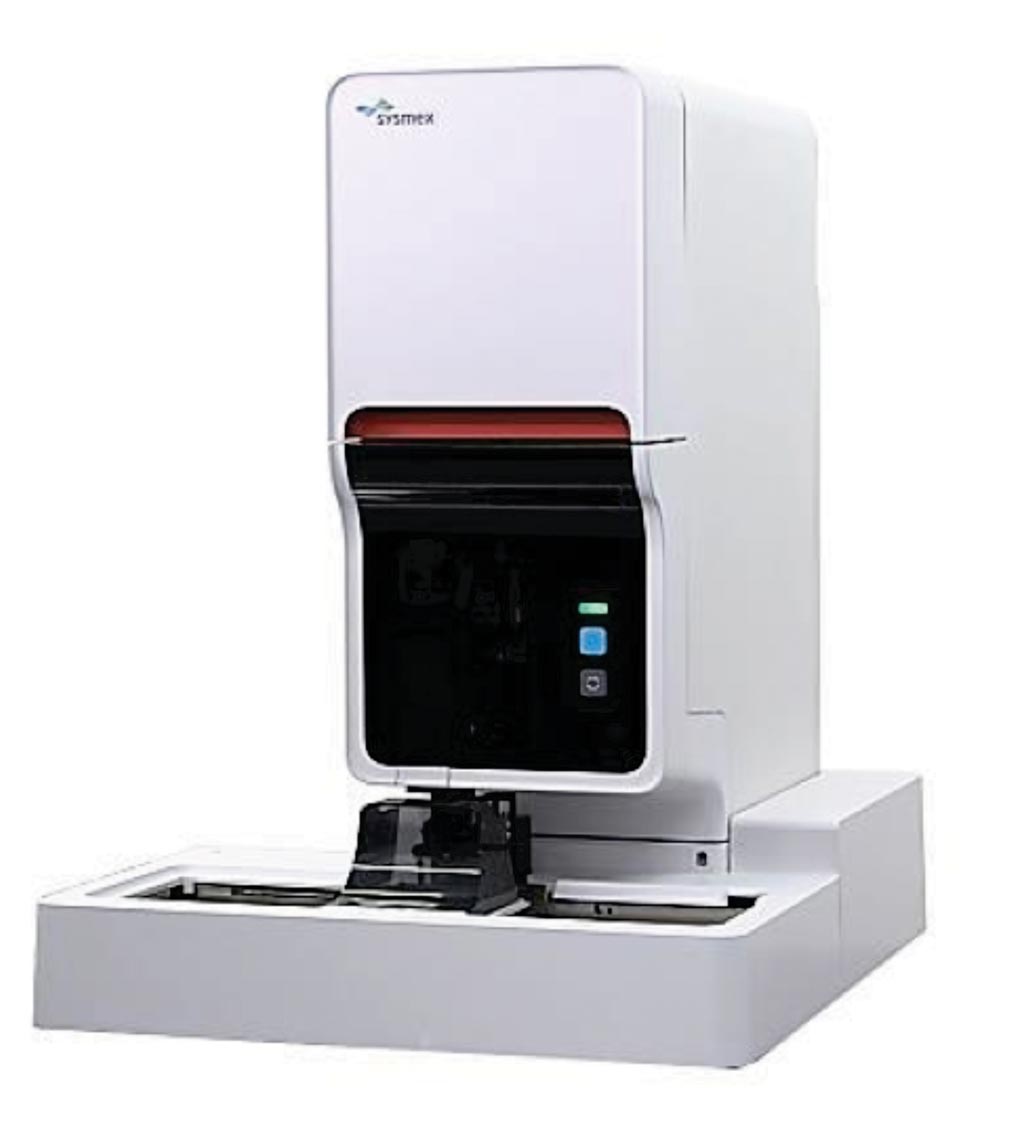Automated Hematology Analyzer Assessed for Malaria Diagnosis
By LabMedica International staff writers
Posted on 11 Jun 2019
Malaria remains a major cause of morbidity and mortality around the world. Sub-Saharan Africa is most affected with Plasmodium falciparum accounting for 99% of estimated cases. Timely and accurate diagnosis of malaria is essential for disease management and control.Posted on 11 Jun 2019
Thin and thick blood smear microscopy and malaria rapid diagnostic tests (RDTs) are standard malaria diagnostics in endemic areas. RDTs have significantly improved the use of diagnostics for malaria diagnosis, accounting for 74% of diagnostic tests performed among suspected cases in 2015. Both techniques provide challenges in clinical practice.

Image: The XN-30 automated hematology analyzer that has an automatic measurement functions for red blood cells infected by malaria parasites (Photo courtesy of Sysmex).
An international team of scientists led by Radboud University Medical Centre (Nijmegen, the Netherlands) performed a prospective, double-blinded, phase 3 diagnostic accuracy study on 16 healthy, malaria-naive controlled human malaria infection (CHMI) participants were challenged with five P. falciparum-infected mosquitoes and a diagnostic accuracy study in Burkina Faso. Blood was sampled daily for XN-30, blood smear microscopy, and malaria quantitative polymerase chain reaction (qPCR). The XN-30 is a novel automated hematology analyzer and malaria diagnostic that directly detects and quantifies Plasmodium parasites (falciparum and non-falciparum) in blood using violet laser technology.
The team reported that all CHMI participants became parasitemic by qPCR and XN-30 with a strong correlation for parasite density. The XN-30 accurately monitored treatment and allowed detection of recrudescence. Out of 908 patients in the accuracy study, 241 had microscopic malaria (density 24–491,802 parasites/μL). The sensitivity and specificity of XN-30 compared to microscopy were 98.7% and 99.4%. Results were corrected for qPCR-confirmed sub-microscopic cases. Three microscopy-confirmed cases were not detected by XN-30. However, XN-30 detected 19/134 (14.2%) qPCR-confirmed cases missed by microscopy.
The authors concluded that the XN-30 holds promise as a rapid and sensitive test for malaria detection and subsequent treatment monitoring. Since XN-30 provides a complete blood count (CBC) with each analysis, it provides critical information for malaria management at a price comparable to CBC. Its higher sensitivity compared to microscopy in low-density parasitaemia also makes it a useful tool for mass screening in control programs. The study was published on May 31, 2019, in the journal BMC Medicine.
Related Links:
Radboud University Medical Centre













